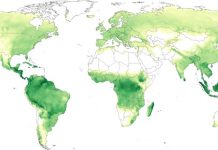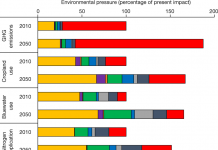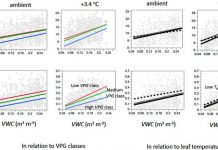【昆虫植物相互作用】Enric Frago Marcel Dicke H. Charles J. Godfray. Insect symbionts as hidden players in insect–plant interactions. Trends in Ecology & Evolution 2012 27(12): 705-711.
Abstract
There is growing evidence of the importance of microbial mutualistic symbioses in insect–plant interactions. Mutualists may affect host plant range and enable insects to manipulate plant physiology for their own benefit. The plant can also be a route for the horizontal transfer of mutualistic microorganisms among their host insects. Where this occurs selection for improved transmission might cause the insect mutualist to damage the plant and become a plant pathogen. Insect microbial associates can influence ecological communities by changing the way the plant interacts with their hosts’ competitors and natural enemies. We review recent research in this field and suggest that insect mutualists may be more important ‘hidden players’ in insect–plant interactions than is currently realised.
【非随机基因流动】Pim Edelaar Daniel I. Bolnick. Non-random gene flow: an underappreciated force in evolution and ecology. Trends in Ecology & Evolution 2012 27(12): 659-665.
Abstract
Dispersal is an important life-history trait involved in species persistence evolution and diversification yet is one of the least understood concepts in ecology and evolutionary biology. There is a growing realization that dispersal might not involve the random sample of genotypes as is typically assumed but instead can be enriched for certain genotypes. Here we review and compare various sources of such non-random gene flow and summarize its effects on local adaptation and resource use metapopulation dynamics adaptation to climate change biological invasion and speciation. Given the possible ubiquity and impacts of non-random gene flow there is an urgent need for the fields of evolution and ecology to test for non-random gene flow and to more fully incorporate its effects into theory.
【微生物多样性】Shauna A. Murray David J. Patterson and Anne E. Thessen. Transcriptomics and microbial eukaryote diversity: a way forward. Trends in Ecology & Evolution 2012 27(12): 651-652.
……We propose that the solution is to greatly increase the application of high throughput sequencing to species defined by typological means. Multiple potential marker genes can be assessed for each protist group to determine their evolutionary rates. Field sampling is needed to obtain new reference material and discriminate between intra- and inter-specific variation. Novel methods will be required to obtain reference sequences from unculturable groups for example single cell transcriptomics coupled with microscopic identification. This will be a massive task. Currently t







